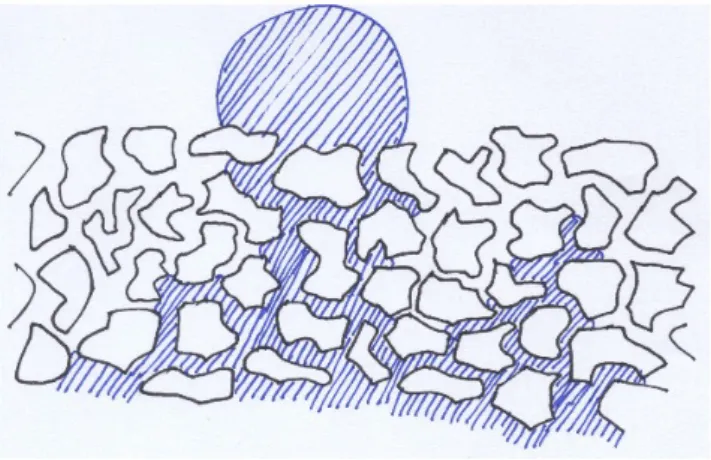Two-phase flow equations with outflow boundary conditions in the
hydrophobic-hydrophilic case Michael Lenzinger and Ben Schweizer
Preprint 2008-12 Mai 2008
Fakult¨ at f¨ ur Mathematik
Technische Universit¨ at Dortmund
Vogelpothsweg 87
Two-phase flow equations with outflow boundary conditions in the
hydrophobic-hydrophilic case
Michael Lenzinger and Ben Schweizer 1
20.5.2008
Abstract: We introduce an approximation procedure and provide existence results for two-phase flow equations in porous media. The medium can have hydrophobic and hydrophilic components such that the capillary pressure function is degenerate for extreme saturations.
Our main interest is the outflow boundary condition which models an interface with open space. The approximate system introduces standard boundary conditions and can be used in numerical schemes.
It allows the derivation of maximum principles. These are the basis for the derivation of the limiting system in the form of a variational inequality.
Keywords: two-phase flow, porous media, outflow boundary, maximum principle, variational inequality
1 Introduction
We study equations that describe two immiscible fluids in a porous medium, e.g. water and oil in rock, water and air in soil, or liquid water and water vapor in fuel cells. It is customary to model the porous medium with Ω ⊂ R n , n = 2, 3, and to use the following two-phase flow equations on the time dependent domain Ω T = Ω × (0, T ).
∂ t s = ∇ · (k 1 (s)∇p 1 ) (1.1)
−∂ t s = ∇ · (k 2 (s)∇p 2 ) (1.2)
p 1 − p 2 = p c (s).
(1.3)
1
![Figure 1: Typical shape of the saturation dependent functions k j and p c . The permeability k 1 vanishes on [0, a], the permeability k 2 on [b, 1], the capillary pressure is monotonically increasing and unbounded for s & a and s % b.](https://thumb-eu.123doks.com/thumbv2/1library_info/3646285.1503066/4.892.319.636.187.512/saturation-dependent-functions-permeability-permeability-capillary-monotonically-increasing.webp)
